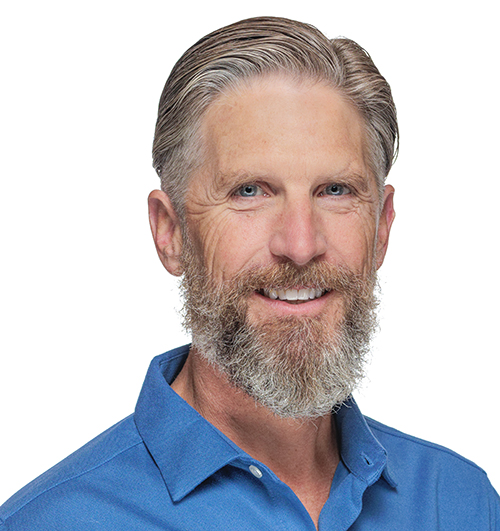On the lighter side of things, we ask Peter Thompson, Co-founder and CEO, LucidLink, what makes him tick.

What would you describe as your most memorable achievement?
I’m still working on it! This has been a multi-step process where I first decided to go back to school at 48 years old. This entailed taking the GMAT and getting into the Stanford MSx program at the GSB.
This late career move certainly stretched me in so many unnatural ways that I had no choice but to grow. It also set me on a path to re-connect with my co-founder and set out starting a company, hiring a team, and growing it into something we’re both proud of.
If you want to talk non-work related, it would be the cave diving expedition I co-led and photographed as we surveyed and mapped an underground sump system in the mountains of northern Japan in Iwate prefecture.
It took five years to get there, but at the end of it, we were able to safely say that we were the first humans to ever lay eyes on part of this earth and that was an amazing and satisfying feeling.
What first made you think of a career in technology?
In the 1990s I was specializing in commerce and trade between the US and Japan and that track took me to Silicon Valley where I first got my feet wet in tech. This was more in the magnetic coatings and substrates, semiconductor materials, and some hardware.
In 2000, a start-up happened to be looking for a person with my set of skills (tech plus Japanese) to help with their launch into Japan and working with Japanese investors and OEM’s.
What style of management philosophy do you employ with your current position?
I believe in maximum flexibility with accountability. We strive to run a flat organization, adding management layers as we scale and it becomes necessary. We prefer not to hand out titles until they are earned and we’ve scaled into the need for such a role. We keep transparency and open communication as core values.
Although we have a number of core values in place, we can break them down into three main categories: how we treat others (both inside and outside the organization); how we communicate (generously and transparently); and how we work (pursuing excellence, stretching ourselves and being accountable).
What do you think is the current hot technology talking point?
I don’t think that it is a single technology but rather how the pandemic changed the way we work, communicate and collaborate together. These changes are affecting everything in every organization as companies try to figure out how to keep communication and collaboration at the forefront as they strive to maintain operational efficiency.
This is clearly one of the factors in our growth over the past year. Data is at the heart of all processes and it has significant gravity. Constantly moving it around to where it will be consumed in the workflow is time consuming and costly, not to mention it increases the surface area making it more vulnerable to attack.
The bigger the files or data set, the more these problems are magnified. We’ve taken a unique approach allowing customers to access data in place rather than constantly moving it around and we’re hearing from customers that it solves a lot of problems and opens new workflows they had never even considered possible in the past.
How do you deal with stress and unwind outside the office?
Almost anything outside with my family and dog. Fresh air and sunshine and preferably something that requires a focus that forces all vestiges of work worry out of my brain for a little while. Some of the things I really like are fishing, ice fishing, kayak fishing, (see a trend here?) skiing, hiking, camping, photographing my kids’ basketball games.
If you could go back and change one career decision, what would it be?
I would have pivoted my career earlier. For a long time, I felt that I’d missed my window and it was too late to go back to school and get on the start-up train. Luckily, I had a supportive family who encouraged and supported me through the school and lean years!
What are the region-specific challenges when implementing new technologies in North America?
Data has gravity and the days are gone of trying to co-locate your entire team in one location. But when your teams are utilizing data in their workflows, you’ve got to put a lot of work into figuring out the infrastructure that will allow it.
While this trend has removed many of the geo-specific borders, it has also introduced new challenges around either delivering applications to your users, or data to the applications. Usually, the decisions around where to host applications and data are tied together (they must be next to one another), technologies like LucidLink enable you to make those decisions independently. This is a powerful thing.
What changes to your job role have you seen in the last year and how do you see these developing in the next 12 months?
As a start-up CEO, I need to reinvent my role with every stage. Now that we have built out our team with professionals in every functional group, I’m turning my attention to figuring out how we can maintain our positive culture and open communication as we scale the team in a remote-first environment.
What advice would you offer somebody aspiring to obtain a C-level position in your industry?
Look for a company where you can ‘scale down’ and help build the practice before you hire out the team that you will ultimately manage to run it. You will be much more effective because you did the job in the trenches and will understand the nuances of the challenge from the inside.
That is what we do when we hire functional group leaders – seek those who are ready to ‘scale up’ from their previous position as an operator, or those who are willing to ‘scale down’ and help build the practice that they will ultimately manage.


